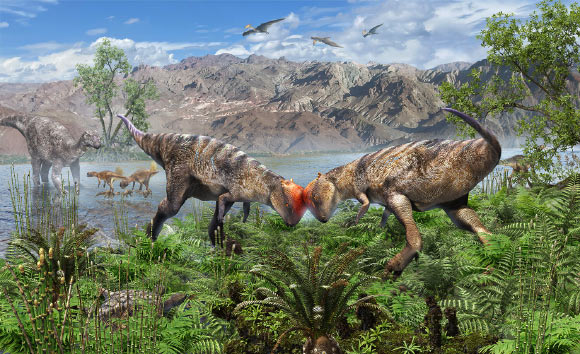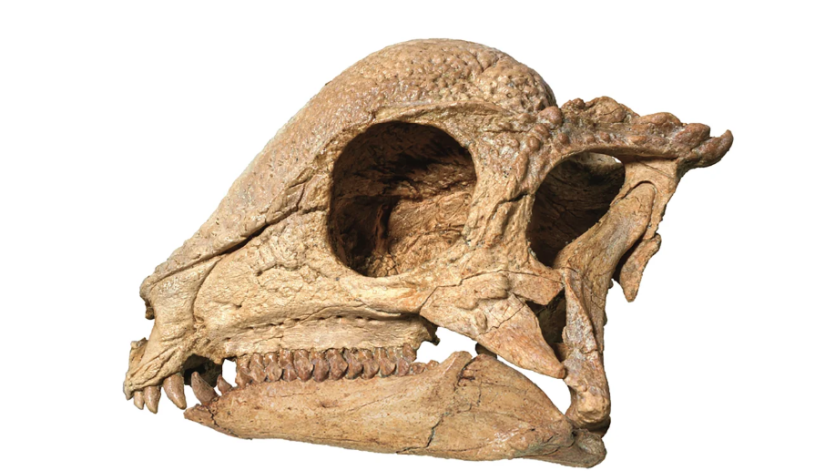New Dinosaur Species Study Published in Prestigious Nature Journal
Society
Ulaanbaatar, September 19, 2025 /MONTSAME/. Researchers from the Institute of Paleontology at the Mongolian Academy of Sciences, Dr. Ts. Chinzorig, Dr. Kh. Tsogtbaatar, researchers B. Buyantegsh and B. Mainbayar, in collaboration with scholars from North Carolina State University in the United States, have published their study on a new dinosaur species in the journal Nature.
The dinosaur, named “Zavacephale Rinpoche” (meaning “dome-headed”), is distinguished by the dome-shaped, protruding cranial roof, which sets it apart from other dinosaur groups. Until now, the body structure and anatomy of this “dome-headed” dinosaur have been largely unknown, as its fossils are scarce, making it one of the rarest dinosaurs in the world.
A joint expedition organized by the Institute of Paleontology and North Carolina State University led to an extraordinary fossil discovery at the “Khuren Dukh” formation in Mongolia. This site features rock layers from the Early Cretaceous period, approximately 108–115 million years old. The find has since garnered the attention of paleontologists and dinosaur enthusiasts worldwide.
The specimen consists of a skull and postcranial skeleton, measuring about 80 cm in length and weighing around 5.85 kg. It represents the fossil of an herbivorous “dome-headed” dinosaur.
The fossil includes the shoulder girdle, humerus, vertebrae, pelvis, hind limbs, tail vertebrae encased in ossified tendons, and gastroliths (stomach stones). It is considered the most complete specimen of a “dome-headed” dinosaur ever recorded in paleontology.
Based on its rarity, geological age, and excavation context, researchers named the new dinosaur Zavacephale Rinpoche, a combination of words meaning “the first dome-headed” and “rare, precious.”
Zavacephale is remarkable for being the first “solid-headed” dinosaur found with forelimb elements and gastroliths. Anatomical features of the skull and body, along with microscopic studies of bone tissue, confirm that the individual was an adult. Geologically, Zavacephale represents the earliest known species of the “solid-headed” dinosaur group.
The research findings were published on September 17, 2025, in the issue of Nature, one of the world’s most prestigious scientific journals (impact factor: 50).

 Ulaanbaatar
Ulaanbaatar














































































